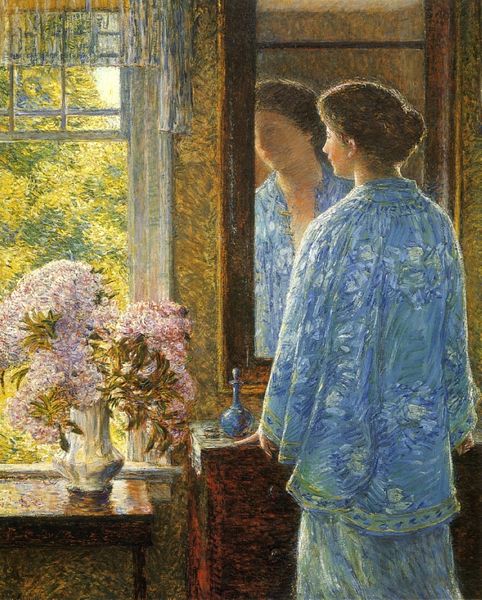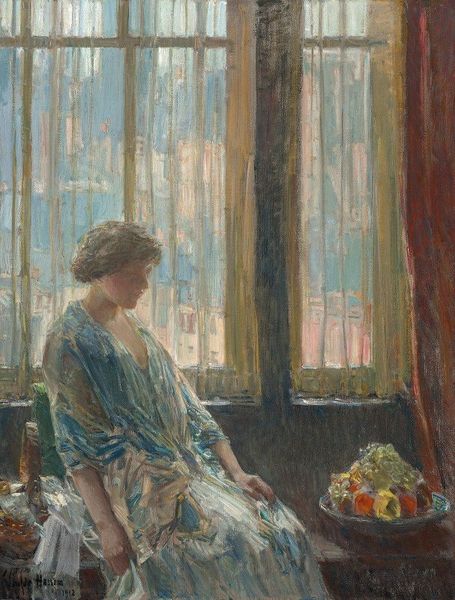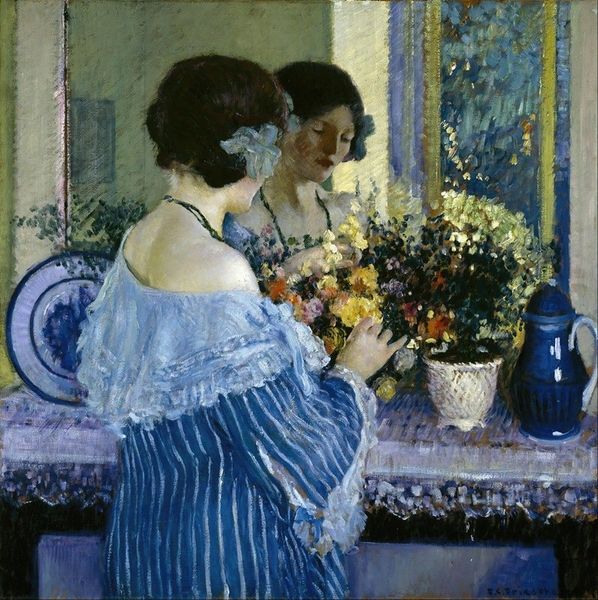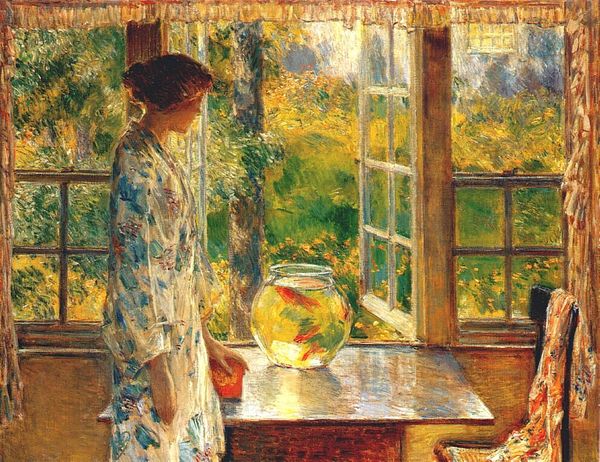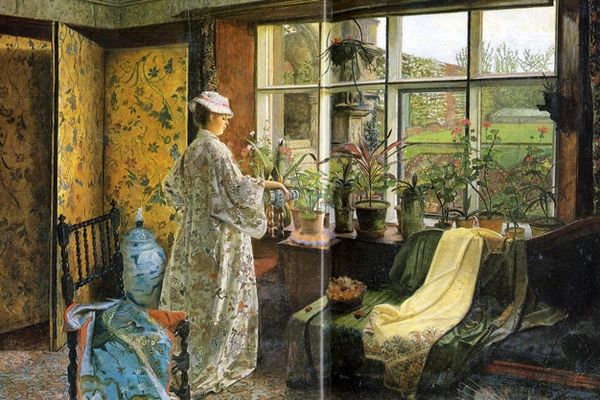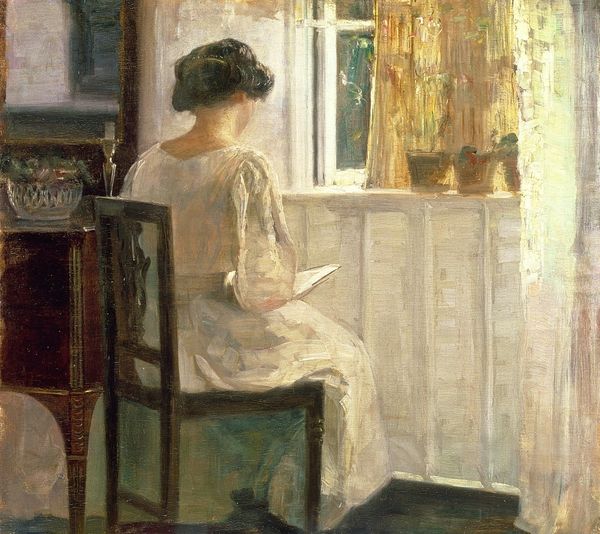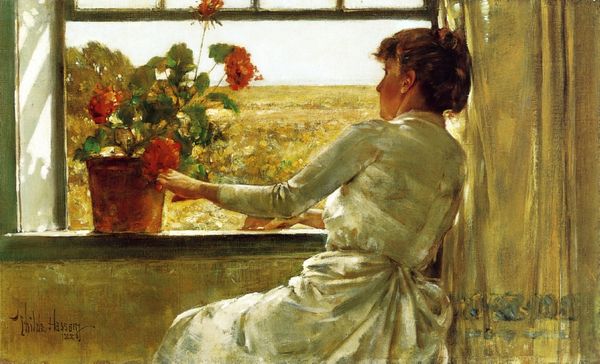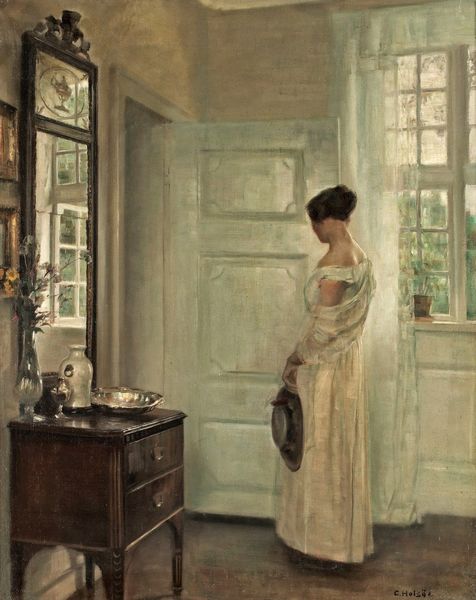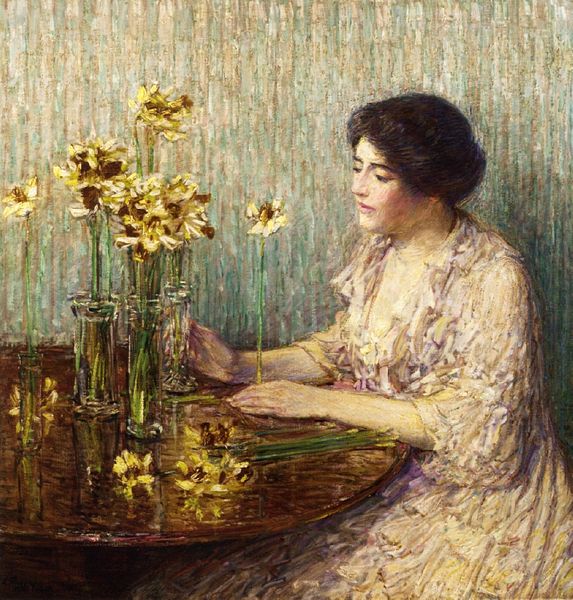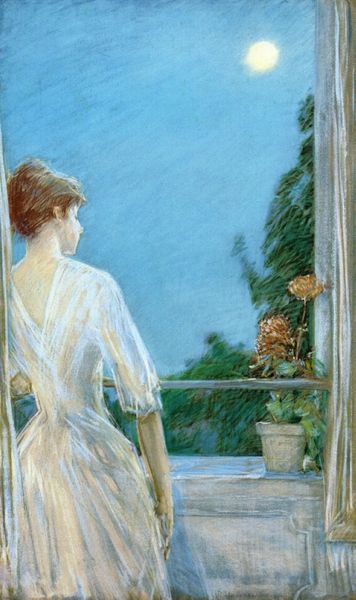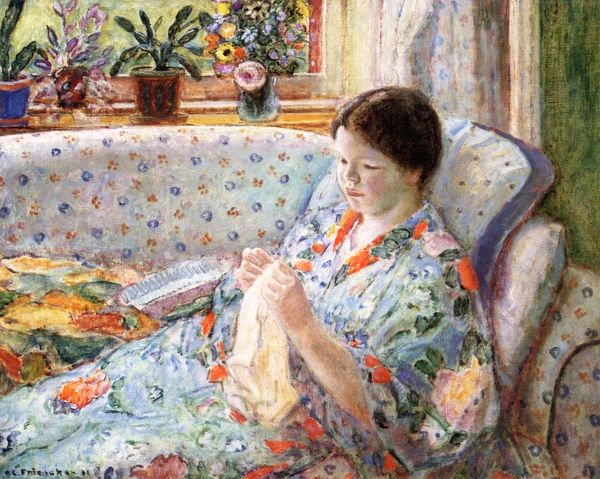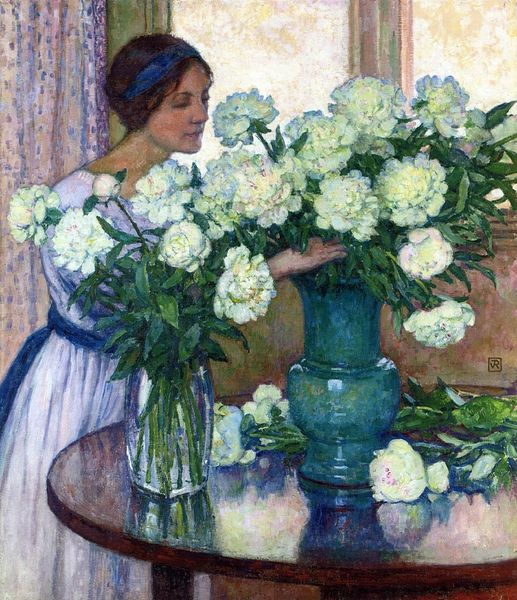
Copyright: Public domain
Curator: Childe Hassam’s "The Table Garden," painted in 1910, offers us an intimate glimpse into domestic life through an Impressionistic lens. The work renders a woman in what appears to be her parlor, gazing out the window. What are your initial thoughts? Editor: The first thing that strikes me is the texture – thick brushstrokes, especially on that patterned robe she’s wearing. I can almost feel the weight of the oil paint. There’s something almost unfinished about it. Curator: Indeed. Hassam often explored the complexities of turn-of-the-century American womanhood, framing his subjects in scenes of both leisure and confinement. What statement is being made, intentionally or unintentionally, by her domestic pose and engagement with her interior setting? Editor: The production of domesticity seems relevant here. Look at the way the plants are staged, like little sculptures – these materials tell of labour. It’s about controlling nature to fashion a visually pleasing environment; consumption presented as refined cultivation. Curator: The act of tending to this ‘table garden,’ we might argue, positions her within the then-emerging dialogues surrounding women’s roles in horticulture and the aesthetic movements of the era, linking back to feminist readings on identity, art, and self-representation. How might the light filtering through the window, also a prevalent motif of Hassam, contribute? Editor: From a materials perspective, it shows how deliberate Hassam's application of light is to the scene, giving it a gilded feeling by layering thin glazes on the curtains which are suspended on visible wood, giving attention to the materiality of it. This contributes to an understanding about its creation and how that contributes to the mood it evokes. Curator: This play of light also serves as an ethereal reminder of time and place. Considering how Hassam situated himself within artistic circles interested in Japonisme and interior spaces, what further insights can we gain? Editor: Perhaps that even what we consider an elite artistic statement made of oil paint and intentional staging would not be possible without global systems of material access: pigments and labour. Curator: A compelling perspective – viewing it from a social, economic and cultural point of view gives new depths to the surface-level reading. Editor: I agree. Examining production alongside identity reveals a lot, bringing into question a wide array of consumption, beauty, labour, and more.
Comments
No comments
Be the first to comment and join the conversation on the ultimate creative platform.
